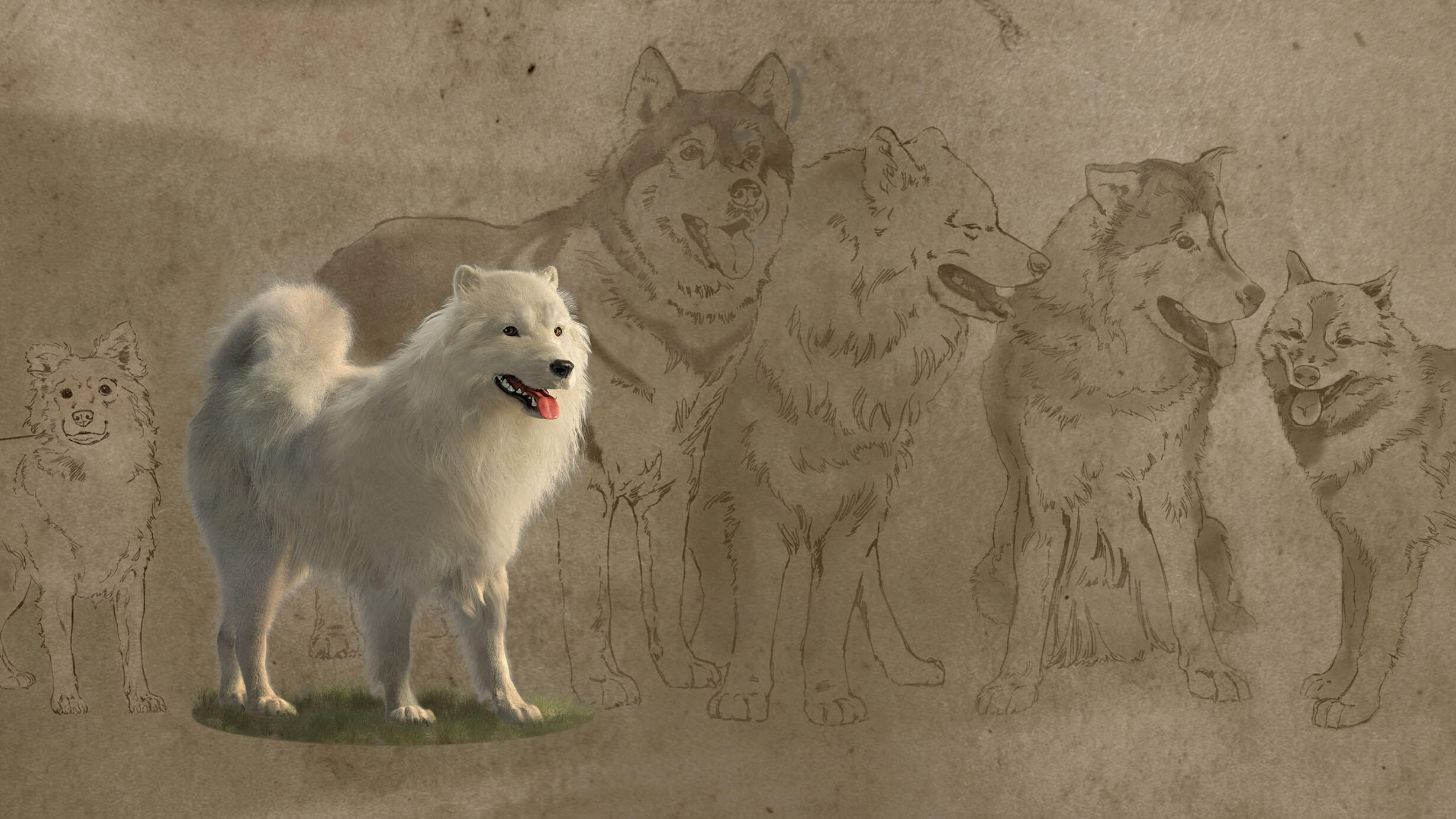 The reconstructed woolly dog shown at scale with Arctic dogs and spitz breeds in the background to compare scale and appearance.
The reconstructed woolly dog shown at scale with Arctic dogs and spitz breeds in the background to compare scale and appearance.Woolly dogs are a traditional breed of domestic dog maintained by the Coast Salish people and prized for their long, thick hair that was used by high-ranking women to spin into yarn and weave into woven textiles. Western histories explaining the reasons for the loss and extinction of the Indigenous woolly dog has often excluded the Indigenous perspective.
Today, there is a growing movement of community-centered scientific research, where community engagement methods are integrated into the research process from the beginning. This model of cross-cultural collaboration had contributed greatly to our understanding of the history of woolly dogs, providing important context for their unique genetics, which are the direct result of thousands of years of specialized breeding practices by the Coast Salish.
Join Audrey Lin, Gerstner Postdoctoral Scholar in Bioinformatics and Computational Biology, and Eliot White-Hill, Kwulasultun, Snuneymuxw artist, as they discuss the invaluable role of Indigenous knowledge in the genetic study of woolly dogs and their extinction. They will highlight the essential contributions of Indigenous perspectives to science, illustrated through the historical journey of the woolly dog.
Quick Pick: What are woolly dogs?
Big Bite: Extinct Woolly Dog Analyzed in Collaborative Study with Coast Salish Co-authors.
Mutton, an Indigenous woolly dog, died in 1859—New analysis confirms precolonial lineage of this extinct breed, once kept for their wool.
Deep Dive: The history of Coast Salish “woolly dogs” revealed by ancient genomics and Indigenous knowledge.